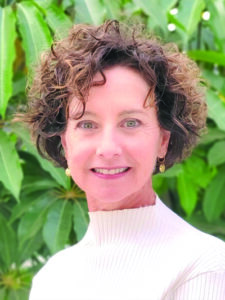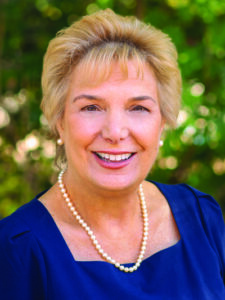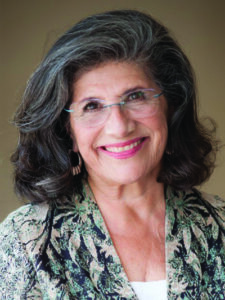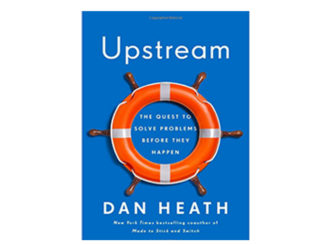By Cris Bain-Borrego, Debbie Fox, Phil Glowatz, Michael Mermelstein, and Diane Trotta
Dear Emeritus,
I have been reluctant to conduct in-person focus groups at facilities since COVID, especially because my online research engagements are going so well. My clients and I are finally ready to take the leap, but I need to understand how things have changed since before the pandemic.
- What have facilities done to ensure a safe environment for participants, clients, and moderators?
- How have participant recruiting, show rates, incentives, and recruiting/facility costs been impacted?
- How have your clients responded to your recommendations for in-person focus groups, and how do they feel about traveling to different locations?
Sincerely,
Reluctant in Rhode Island
 Cris Bain-Borrego Responds
Cris Bain-Borrego Responds
Dear Reluctant,
Despite the comfort, convenience, and low carbon footprint of online work, some clients want to get back in person—face-to-face with their potential customers, voters, patients, and prospects. Facilities are rising to the occasion to make sure everyone is safe. Facility owners and staff are thrilled to have us back with welcoming smiles and sanitizer bottles all around. Snacks and sandwiches for participants are individually wrapped, and client meals are served in their to-go boxes or plated individually from previously ordered menus. Other than these minor changes—and the missing bowl of communal M&Ms—conducting work in a professional facility is the same as prior to the pandemic. In addition to my typical warm welcome and appreciation to all those who agreed to participate, I encourage people to be comfortable wearing or not wearing a mask when sitting around the table. This makes it somewhat more challenging for observers (and interpreters) in the backroom, but I see this as a positive since everyone must pay closer attention.
My world is the Hispanic segment, and the very best recruiters are as creative as ever, using community centers and parishes to boost show rates among Spanish-dominant and otherwise wary undocumented participants. Off-site groups require partnering with a good AV team, which, in my case, must include sophisticated simultaneous interpreting systems allowing clients real-time observation. Needless to say, a moderator is only as good as their interpreter, so professional simultaneous interpretation is key!
Over-recruiting remains important, and I’ve seen some incentives go slightly higher than pre-COVID. Nonetheless, clients are thrilled to be back in the field. A recent example of that enthusiasm was a tiny backroom packed with 12 clients, three researchers, two AV techs, and one interpreter for an early Saturday morning group in an East Los Angeles community center.
I have been surprised at how much I have been able to connect and bond with participants online, especially with sensitive topics, as they can express themselves ever so freely from the comfort of their homes. However, it seems to me that my clients are much more engaged in face-to-face research, both with participants and the moderator. That is enough reason for me to encourage in-person fieldwork in conjunction with virtual methodologies!
 Debbie Fox Responds
Debbie Fox Responds
Dear Reluctant,
I have a unique perspective as a project manager for moderators. Like most of their colleagues, my clients love speaking to people face-to-face and then traveling to the next market(s). They have been cautiously excited to conduct in-person groups after the pandemic has taught them to change their model and go virtual.
Walking into a facility today, you immediately see signage about COVID safety, hand sanitizer, and optional masks. Rooms are cleaned between each group, and some facilities have put air purifiers in each room. The Mars Company has suffered alongside the facilities now that large bowls of M&Ms are no longer all over the viewing rooms. They have been replaced with variety-pack snack-size bags.
While facilities tell us that in-person focus groups are back in full swing, I personally am not finding that to be true. A large majority of the groups I am coordinating are still online only. Recently, I worked on a focus group project where we did both in-person and online—we did virtual groups that allowed us to connect with people nationwide paired with in-person groups in three specific markets. I think the new reality will often include a hybrid approach of in-person and virtual focus groups. For end clients, there is definitely something attractive about viewing groups from the comfort of their own home/office and not traveling.
In-person research costs are higher than before the pandemic. Facility rental and administrative costs have increased substantially because there are far fewer facilities. Participants expect much higher incentives to come to an in-person group than what they are satisfied with for participating in a virtual session. In addition, some recruiters will no longer recruit for in-home studies because participants have shared that they do not want random people in their homes.
People have grown very comfortable participating in virtual groups in the comfort of their own homes and appreciate the incentive amount they can receive without traveling to a facility. We need to over-communicate when recruiting for in-person groups because participants have come to assume their engagement will be virtual.
 Phil Glowatz Responds
Phil Glowatz Responds
Dear Reluctant,
In-person focus groups have not returned to being the default choice of my clients. Rather, it has to do with the overriding workplace dynamic of our times—Remote Convenience. “Back to the office” has stalled because professionals have seen they can accomplish the same things at home, conveniently, all while wearing comfortable clothes and even pajama bottoms. Likewise, clients have seen they can get rich results from online focus groups, IDIs, and bulletin boards, conveniently, without ever leaving the house. They get to be with their spouses, partners, kids, and pets instead of sitting in a dark back room eating too many M&Ms. Even when I have conducted in-person groups most recently, it was a hybrid project, with several online groups in the mix.
Is a “Brady Bunch” focus group as good as an in-person group? Probably not in many cases, but convenience—including no travel—can outweigh the disadvantages in the eye of the beholder. Indeed, my recent in-person groups were local to the client, while the online groups were not. The nontravel piece also adds cost savings, stretching the market research budget a bit. Don’t forget those pajama bottoms.
 Michael Mermelstein Responds
Michael Mermelstein Responds
Dear Reluctant,
The slow return to in-person research is driven more by clients (and participants) not having to travel to facilities, budget, and the fact that online focus groups can provide meaningful results. We’ve learned how to do good research online, and we continue to get better with experience and technology enhancements.
In my experience, participants have had no problem returning to in-person research, though it varies in different parts of the country. While initially, there may have been the need to have an increased over-recruit amount, it is no longer necessary to go beyond the typical over-recruit. Incentives have also crept upward to keep up with inflation.
As for facility safety, everyone has a different comfort level, and facilities will do what they can to make everyone feel at ease. Requiring masks, proof of vaccinations, and other prevalent COVID-related steps when the facilities first opened back up are no longer the norm. As long as we are consistent with what we tell the facility when booking, what we tell participants when recruiting, and communicating our needs as moderators and the needs of our clients on-site, everything will run smoothly. Everyone should be in sync with the steps being taken and then consistently follow through because inconsistencies and lack of follow-through can create issues.
The decision for utilizing in-person versus online or other methodologies continues to be based on the best way to meet the objectives of the research. It is not as necessary to factor in issues that we worried about when COVID was a more prevalent problem than it is today.
 Diane Trotta Responds
Diane Trotta Responds
Dear Reluctant,
As a former facility owner and current part-time moderator, I was reluctant to embrace online qual when COVID hit us like a brick in March 2020. But, when forced to adapt, I became a believer shortly after giving it a try. Virtual was easy, comfortable, and saved me time. It was also cost-effective for my clients. My clients and I quickly embraced the new normal and enjoyed it.
As we moved on from the initial shock of COVID, I found that some clients, especially the local ones, wanted to be more hands-on and in the moment. They began requesting in-person groups in early 2023. Cost savings became a priority as in-person group costs were significantly higher than online/virtual groups and have not been accounted for in client budgets for the last few years. The traditional observer and participant dinners I offered pre-COVID were now an option if clients could spend extra for them. One of my clients chose to use their small portable camera to record the groups instead of paying for the facility’s video recording to save money. Incentives, recruiting, and show rates, at least in my case, are about the same as in “the old days.” Though facility costs seem a bit higher, I conjectured that was justifiable because the facilities had to make up for a lot of downtime.
Conducting focus groups in person at a facility has felt really good! All in all, I am happy to conduct my groups in person or online. I let my client decide which method works best for them and their budget considerations.




